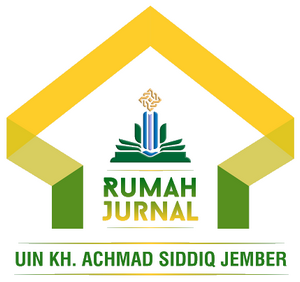Bridging The Gender Gap: Investigating Disparities In Student Communication Skills In The Digital Education Era
DOI:
https://doi.org/10.35719/annisa.v17i1.219Communication skills are one of the primary skills that students need to have. Previous research indicates a tendency for differences in communication skills based on gender. For this reason, this research investigates how learning in the digital era can enhance communication skills in students aspiring to become prospective teachers and explores whether there are differences in communication skills based on gender. The research employs a comparative descriptive method to assess the level of student's communication skills, considering gender as one of the influencing factors. The sample consists of 19 male and 19 female students selected through quota sampling. Data analysis conducted using SPSS reveals that overall communication skills are 'good,' except multilingual skills, which are 'sufficient.' Surprisingly, digital technology, particularly translator apps, negatively impacts students' ability to communicate in foreign languages. Gender differences in communication skills were found insignificant when educational opportunities were equal, showing similar skill levels among both genders. This study contributes to scholarship by demonstrating that using digital technology in the learning process can enhance students' communication skills. Additionally, this research proves that, with equal education, gender differences do not affect communication skills. This finding can assist in designing more inclusive and effective learning strategies for developing communication skills in the digital era.
References
Aksnes, D. W., Langfeldt, L., & Wouters, P. (2019). Citations, Citation Indicators, and Research Quality: An Overview of Basic Concepts and Theories. SAGE Open, 9(1). https://doi.org/10.1177/2158244019829575
Alkathiri, S. A. N., Bakhiet, S. F. A., & Dutton, E. (2024). The Effectiveness Of A Training Program Based On Active Learning Strategies In Developing The Creative Thinking Skills Of Female Students With Learning Disabilities. Cogent Education, 11(1). https://doi.org/10.1080/2331186X.2024.2413235
Allen, B. J. (2023). Difference matters: Communicating social identity. Waveland Press. https://books.google.com/books?hl=en&lr=&id=nV2mEAAAQBAJ&oi=fnd&pg=PR1&dq=These+differences+in+communication+patterns+are+assumed+to+also+be+influenced+by+gender+factors&ots=a3BfEqQ8pX&sig=pdD7RWXITdgYez80iL9lpBo0e-s
Asrar, Z., Tariq, N., & Rashid, H. (2018). The Impact of Communication Between Teachers and Students: A Case Study of the Faculty of Management Sciences, University of Karachi, Pakistan. European Scientific Journal, ESJ, 14(16), 32. https://doi.org/10.19044/esj.2018.v14n16p32
Batista, J., Santos, H., & Marques, R. P. (2021). The Use of ICT for Communication between Teachers and Students in the Context of Higher Education Institutions. Information, 12(11), 479. https://doi.org/10.3390/info12110479
Bin Dahmash, N. (2020). ‘I Can’t Live Without Google Translate’: A Close Look at the Use of Google Translate App by Second Language Learners in Saudi Arabia. Arab World English Journal, 11 (3) 226 -240. https://dx.doi.org/10.24093/awej/vol11no3.14
Craig, R. J., & Amernic, J.H. (2006). PowerPoint Presentation Technology and the Dynamics of Teaching. Innov High Educ 31, 147–160. https://doi.org/10.1007/s10755-006-9017-5
Cronin, C. and Roger, A. (1999), Theorizing Progress: Women In Science, Engineering, And Technology In Higher Education. Journal of Research in Science Teaching., 36: 637-661. https://doi.org/10.1002/(SICI)1098-2736(199908)36:6<637::AID-TEA4>3.0.CO;2-9
Dabengwa, I. M., Moyo, S., Ncube, S., Gashirai, T. B., Makaza, D., Makoni, P., … Mandaza, D. (2024). Exploring Digital Competences In Zimbabwean Secondary Schools Using A Multimodal View: A Hermeneutical Phenomenography Study. Cogent Education, 11(1). https://doi.org/10.1080/2331186X.2024.2387911
Dahmani, N., Ali, W., Aboelenein, M., Alsmairat, M. A. K., & Faizi, M. (2024). From Classroom Interaction To Academic Success: Tracing The Mediating Role Of Effective Communication In Faculty-Student Dynamics. Cogent Education, 11(1). https://doi.org/10.1080/2331186X.2024.2377847
de Moor, E. L., Nelemans, S. A., Becht, A. I., Meeus, W., & Branje, S. (2022). Personality Development Across Adolescence and Young Adulthood: The Role of Life Transitions and Self-Concept Clarity. European Journal of Personality, 37(5), 587-604. https://doi.org/10.1177/08902070221119782
Dunbar, K., & Yadav, A. (2022). Shifting To Student-Centered Learning: Influences Of Teaching A Summer Service Learning Program. Teaching and Teacher Education, 110, 103578. https://doi.org/10.1016/j.tate.2021.103578
Eckhaus, E., Wadmany, R., & Davidovitch, N. (2024). Student Perceptions Of The Benefits And Shortcomings Of Slideshows As Evaluation Tools. Cogent Education, 11(1). https://doi.org/10.1080/2331186X.2024.2388979
Etkin, P., De Caluwé, E., Ibáñez, M. I., Ortet, G., & Mezquita, L. (2022). Personality Development And Its Associations With The Bifactor Model Of Psychopathology In Adolescence. Journal of Research in Personality, 97, 104205. https://doi.org/10.1016/j.jrp.2022.104205
Feinstein, J. (2008). The Importance of Accurate References in Journals. Editors’ Bulletin, 4(3), 100–102. https://doi.org/10.1080/17521740802651237
Gregersen, F., & Røyneland, U. (2009). Introduction: Sociolinguistics. Nordic Journal of Linguistics, 32(2), 185–189. https://doi.org/10.1017/S0332586509990023
Guillen-Gamez, F. D., Mayorga-Fernández, M. J., & Contreras-Rosado, J. A. (2021). Incidence of Gender in the Digital Competence of Higher Education Teachers in Research Work: Analysis with Descriptive and Comparative Methods. Education Sciences, 11(3), 98. https://doi.org/10.3390/educsci11030098
Hall, R. M., & Sandler, B. R. (1982). The Classroom Climate: A Chilly One for Women? https://eric.ed.gov/?id=ED215628
Hawken, L., Duran, R. L., & Kelly, L. (1991). The Relationship Of Interpersonal Communication Variables To Academic Success And Persistence In College. Communication Quarterly, 39(4), 297–308. https://doi.org/10.1080/01463379109369807
Hikmawati, H., Sahidu, H., Ayub, S., & Kosim, K. (2021). Peningkatan Keterampilan Komunikasi Mahasiswa Calon Guru Melalui Kegiatan Analisis Artikel Ilmiah Dari Jurnal Nasional. Unram Journal of Community Service, 2(2), 33–37. https://doi.org/10.29303/ujcs.v2i2.32
Holmes, J. (2013). An Introduction to Sociolinguistics (4th ed.). Routledge. https://doi.org/10.4324/9781315833057
Huh, J. (2020). Smart Communication for a Digital World. Journal of Interactive Advertising, 20(3), 240–243. https://doi.org/10.1080/15252019.2020.1849693
Hömke, P., Holler, J., & Levinson, S. C. (2017). Eye Blinking as Addressee Feedback in Face-To-Face Conversation. Research on Language and Social Interaction, 50(1), 54–70. https://doi.org/10.1080/08351813.2017.1262143
Iverson, J. M. (2010). Developing Language In A Developing Body: The Relationship Between Motor Development And Language Development. Journal of child language, 37(2), 229–261. https://doi.org/10.1017/S0305000909990432
Kusters, A., & Lucas, C. (2022). Emergence And Evolutions: Introducing Sign Language Sociolinguistics. Journal of Sociolinguistics, 26, 84–98. https://doi.org/10.1111/josl.12522
Lovell, B., Lee, R. T., & Brotheridge, C. M. (2009). Gender Differences In The Application Of Communication Skills, Emotional Labor, Stress-Coping And Well-Being Among Physicians. Archives: The International Journal of Medicine, 2(3), 273+. https://link.gale.com/apps/doc/A209537187/HRCA?u=anon~6fdb4b2a&sid=googleScholar&xid=f52abf91
Mahanal, S., Zubaidah, S., Setiawan, D., Maghfiroh, H., & Muhaimin, F. G. (2022). Empowering College Students’ Problem-Solving Skills through RICOSRE. Education Sciences, 12(3), 196. https://doi.org/10.3390/educsci12030196
Milawati., Cangara, H., & Arianto. (2022). Utilization Of New Media In Tourism Marketing Communication: Marketing Strategy Conducted By Government Tourism Office Of West Sulawesi. In Proceedings of the International Conference on Communication, Policy and Social Science (InCCluSi 2022) (pp. 246–254). Atlantis Press. https://doi.org/10.2991/978-2-494069-07-7_30
Mudjijanti, F., & Srimulyani, V. A. (2023). The Impact of E-Learning on Student Interest during the Covid-19 Pandemic. European Journal of Education and Pedagogy, 4(3), 135–142. https://doi.org/10.24018/ejedu.2023.4.3.693
Munira, S. , Hossain, A. and Nessa, M. (2020). Gender and Sex Based Differences in Lexical Directions: A Study on Language Theories. Advances in Applied Sociology, 10, 93-102. https://doi.org/10.4236/aasoci.2020.104007
Munna, A. S., & Kalam, M. A. (2021). Teaching And Learning Process To Enhance Teaching Effectiveness: A Literature Review. International Journal of Humanities and Innovation (IJHI), 4(1), 1–4. https://doi.org/10.33750/ijhi.v4i1.102
Muslim, A. (2020). Implementasi Pembelajaran Partisipatif Melalui Focus Group Discussion Dalam Meningkatkan Kemampuan Komunikasi Mahasiswa. Jurnal Paedagogy, 4(1), 15-20. https://doi.org/10.33394/jp.v4i1.3019
Nurhalizah, S., Zubaidah, S., Mahanal, S., & Setiawan, D. (2020). RICOSRE For The Empowerment Of Students’ Creative Thinking Skills. AIP Conference Proceedings, 2215(1), 030010. https://doi.org/10.1063/5.0000560
Nurlaelah, I., Widodo, A., Redjeki, S., & Rahman, T. (2020). Analisis Kemampuan Komunikasi Ilmiah Peserta Didik Pada Kegiatan Kelompok Ilmiah Remaja Berbasis Riset Terintegrasi Keterampilan Proses Sains. Quagga: Jurnal Pendidikan Dan Biologi, 12(2), 194–201. https://journal.uniku.ac.id/index.php/quagga/article/view/2899
O'Connor, C., S. Michaels, Chapin, S., & Harbaugh, A. G. (2017). The Silent And The Vocal: Participation And Learning In Whole-Class Discussion. Learning And Instruction, 48, 5–13. https://psycnet.apa.org/doi/10.1016/j.learninstruc.2016.11.003
Penciner, R. (2013). Does PowerPoint enhance learning? Canadian Journal of Emergency Medicine, 15(2), 109–112. https://doi.org/10.2310/8000.2013.130756
Polakova, M., Suleimanová, J. H., Madzik, P., Copus, L., Molnarova, I., & Polednova, J. (2023). Soft Skills And Their Importance In The Labour Market Under The Conditions Of Industry 5.0. Heliyon, 9(8), e18670. https://doi.org/10.1016/j.heliyon.2023.e18670
Priadi, R. (2020). Teacher Communication Effectiveness In The Learning Process. Budapest International Research and Critics Institute (BIRCI-Journal): Humanities and Social Sciences, 3(4), 3433–3444. https://doi.org/10.33258/birci.v3i4.1378
Qazi, A., Hasan, N., Abayomi-Alli, O. et al. (2022). Gender Differences In Information And Communication Technology Use & Skills: A Systematic Review And Meta-Analysis. Educ Inf Technol 27, 4225–4258. https://doi.org/10.1007/s10639-021-10775-x
Qureshi, M. A., Khaskheli, A., Qureshi, J. A., Raza, S. A., & Yousufi, S. Q. (2021). Factors Affecting Students’ Learning Performance Through Collaborative Learning And Engagement. Interactive Learning Environments, 31(4), 2371–2391. https://doi.org/10.1080/10494820.2021.1884886
Rafikova, A., & Voronin, A. (2024). Unveiling Gender Differences: A Semantic Differential Approach To Studying Mindsets In Language Learning. International Journal of Multilingualism, 1–22. https://doi.org/10.1080/14790718.2024.2338735
Ruthotto, I., Q. Kreth, Stevens, J., Trively, C., & Melkers, J. (2020). Lurking And Participation In The Virtual Classroom: The Effects Of Gender, Race, And Age Among Graduate Students In Computer Science. Computers & Education, 151, 103854. https://doi.org/10.1016/j.compedu.2020.103854
Sasabillah, S., Ningsih, S., Putri, A. G. E., & Sastrawati, E. (2023). Pemanfaatan Literasi Digital Untuk Meningkatkan Inovasi dan Kreativitas Pada Mahasiswa (PGSD). Jurnal Sinestesia, 13(2), 1133–1142. Retrieved from https://sinestesia.pustaka.my.id/journal/article/view/455
Schreurs, J., & Dumbraveanu, R. (2014). A Shift from Teacher Centered to Learner Centered Approach. International Journal of Engineering Pedagogy (iJEP), 4(3), pp. 36–41. https://doi.org/10.3991/ijep.v4i3.3395
Šejtanić, S., & Ilić, M. (2016). Verbal Interaction between Pupils and Teachers in the Teaching Process. European Journal of Education Studies. http://oapub.org/edu/index.php/ejes/article/view/315
Smith, D. P., & Francis, N. J. (2022). Engagement With Video Content In The Blended Classroom. Essays in biochemistry, 66(1), 5–10. https://doi.org/10.1042/EBC20210055
Sudibjo, N., Idawati, L., & Harsanti, H. R. (2019). Characteristics of Learning in the Era of Industry 4.0 and Society 5.0. International Conference on Education Technology (ICoET 2019), 276–278. https://www.atlantis-press.com/proceedings/icoet-19/125925095
Sutiah, & Supriyono. (2024). Enhancing Online Learning Quality: A Structural Equation Modeling Analysis Of Educational Technology Implementation During The COVID-19 Pandemic. Telematics and Informatics Reports, 16, 100175. https://doi.org/10.1016/j.teler.2024.100175
Taylor, D. M. (2002), The Appropriate Use Of References In A Scientific Research Paper. Emergency Medicine, 14: 166-170. https://doi.org/10.1046/j.1442-2026.2002.00312.x
Tegegne, B., & Wondimu, H. (2024). Emotional Intelligence And Effective Communication As Predictors Of Organizational Commitment Among Ethiopian Public University Instructors. Cogent Education, 11(1). https://doi.org/10.1080/2331186X.2024.2312031
Van Nguyen, M. (2023). Google Translate for Writing in an Online English Class: Vietnamese Learners’ Perceptions and Performances. The EuroCALL Review, 30(1), 5–17. https://doi.org/10.4995/eurocall.2023.18246
Wulandari, A., Wibowo, D. E., & Arifin, M. (2022). Pergeseran pembelajaran berbasis student centered learning. PEGAS (Jurnal Pendidikan Guru Sekolah Dasar), 1(1), 1–5.
Xie, F., and A. Derakhshan. (2021). A Conceptual Review Of Positive Teacher Interpersonal Communication Behaviors In The Instructional Context. Frontiers in Psychology, 12, 708490. https://doi.org/10.3389/fpsyg.2021.708490
Yashima, T., Ikeda, M., & Nakahira, S. (2016). Talk and Silence in an EFL Classroom: Interplay of Learners and Context. In J. King (Ed.), The Dynamic Interplay between Context and the Language Learner (pp. 104–126). Palgrave Macmillan UK. https://doi.org/10.1057/9781137457134_7
Yavuz, S., & Güzel, Ü. (2020). Evaluation of Teachers’ Perception of Effective Communication Skills According to Gender. African Educational Research Journal, 8(1), 134–138. https://doi.org/10.30918/AERJ.82.20.010
Yeşil, H. (2010). The Relationship Between Candidate Teachers' Communication Skills And Attitudes Towards The Teaching Profession. Procedia-Social and Behavioral Sciences, 9, 919–922. https://doi.org/10.1016/j.sbspro.2010.12.259
Downloads
Section
License
Copyright (c) 2024 Adelia Alfama Zamista, Khairul Azmi

This work is licensed under a Creative Commons Attribution-NonCommercial 4.0 International License.












 AN-NISA licensed under Creative Commons Attribution-NonCommercial 4.0 International License.
AN-NISA licensed under Creative Commons Attribution-NonCommercial 4.0 International License.